Studio Essentials: Sweatson Klank
The LA-beat scene pioneer details his current favorite studio tools.
For over a decade now, Tom Wilson (a.k.a. Sweatson Klank) has been a leading fixture in LA’s oft-celebrated beat scene—Wilson’s Sketchbook night, for example, laid the groundwork for the city’s lauded Low End Theory party. His music glows with personality, evoking scenes of LA’s neon-lit skyline via shimmering synth work, moody samples, and rapid-fire beats.
Wilson grew up just outside of the city limits in Topanga Canyon to parents active in the arts and entertainment industry, spending his formative years surrounded by creativity and music. Psychedelic rock, jazz, and the work of artists such as Nas, De La Soul, and A Tribe Called Quest accompanied his growth as a teenager, leading to the wide-reaching cinematic sound he now delivers as Sweatson Klank. His entry into DJing and production followed years of frustration in bands and was inspired by an encounter witnessing a DJ at a party control a 400-strong crowd like he “had always wanted to with a band,” which lead to a realization that Wilson could do it all himself.
Wilson’s first musical output landed in 1999 on legendary punk rock label K Records and continued in the early ’00s on Buttermilk Records under the TAKE moniker. Further releases landed on Alpha Pup, Eat Concrete, All City, Poo-Bah Records, and Inner City, before debuting the Sweatson Klank alias with The Brain Stays Fed Mixtape on Brainfeeder in 2009. Wilson retired TAKE in 2010 with Only Mountain, an LP for Alpha Pup—Only Mountain Remixes landed on Alpha Pup the following year, closing the project proper. In the years following, Wilson pushed out a slew of remixes, an EP, and an album as Sweatson Klank on Project: Mooncircle. His latest release, the Fine Lines LP, just dropped on Friends of Friends in May this year.
Since its launch in 2015, Wilson has operated as a lead instructor for Point Blank Music School Los Angeles, mentoring students with knowledge across the entire production and mixing spectrum. As he explains below, Wilson passes on his expertise in sound design, processing, analog and software gear, and much more. For our latest studio essentials, XLR8R asked Wilson to detail some of his current favorite studio tools.
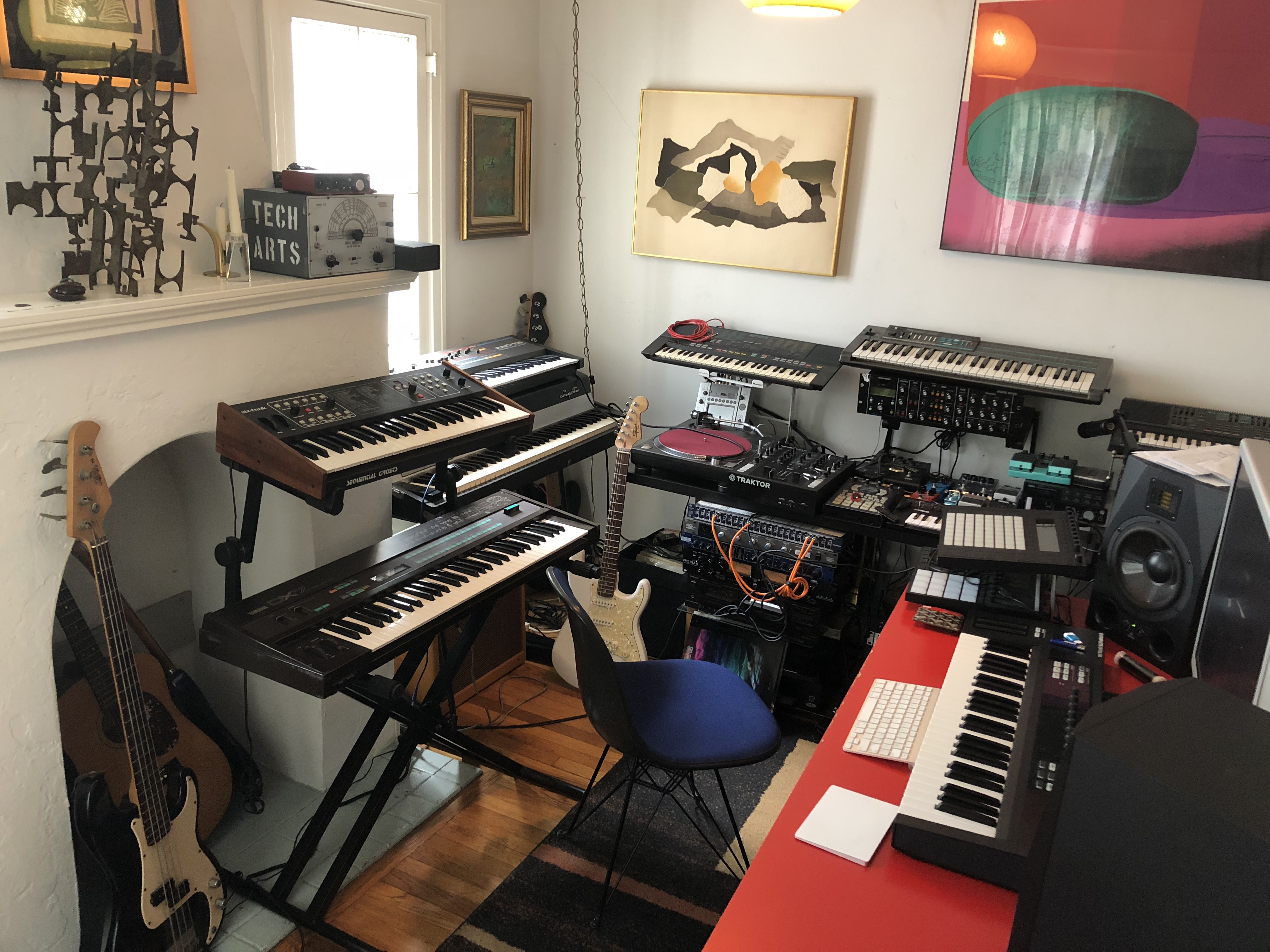
My studio is constantly evolving and I think any producer would say the same thing. As music makers, our music is constantly evolving as well, so as we grow, we are constantly adding, subtracting, and re-arranging—it’s a constant work in progress.
I’m an instructor at Point Blank Music Academy in Los Angeles and I teach music production and mixing courses there. It’s a unique position to be in because most of my students come into the program with nothing but a laptop and, maybe, a MIDI controller. Throughout the course, they look to me for advice on what gear and plugins to buy. I try to give them a broad understanding of what is out there and how to use these tools to make music. We discuss hardware and software, signal routing, MIDI implementation, and sound design, amongst many other topics. It’s a great community environment there and many of my students end up becoming friends of mine and people who I mentor and help with their music.
When it comes to my own studio, I am a big believer in the fact that you can make just about anything sound good if you know how to. Old or new, analog or digital, it all has its place in one song or another. You don’t necessarily need all the latest and most expensive gear to make great music. It’s all in the ideas and how you implement them. Most importantly, you want to be comfortable and inspired when you sit down to be creative. Your studio is similar to your house—it’s that sacred place where you feel most at home. My production setup is a combination of analog synths, guitars, basses, percussion instruments, records, and, of course, a computer at the center of it all as the master control. I use Ableton as my main DAW, a handful of outboard gear for mixing, and Adam A8x monitors.
1. Fender Rhodes

I’m sure everyone is pretty familiar with this one. It is in my humble opinion one of the greatest musical instruments ever made! A warm and rich electric piano that graces some part of pretty much every song I ever make. Unlike most synths, this thing has one sound and one sound only, but don’t let that fool you.
You can record it directly or mic it through an amp. Not to mention run it through any number of pedals to achieve a vast array of sounds. There is a certain tone to a Rhodes that just warms up any song and injects it with soul.
2. Korg Poly 800
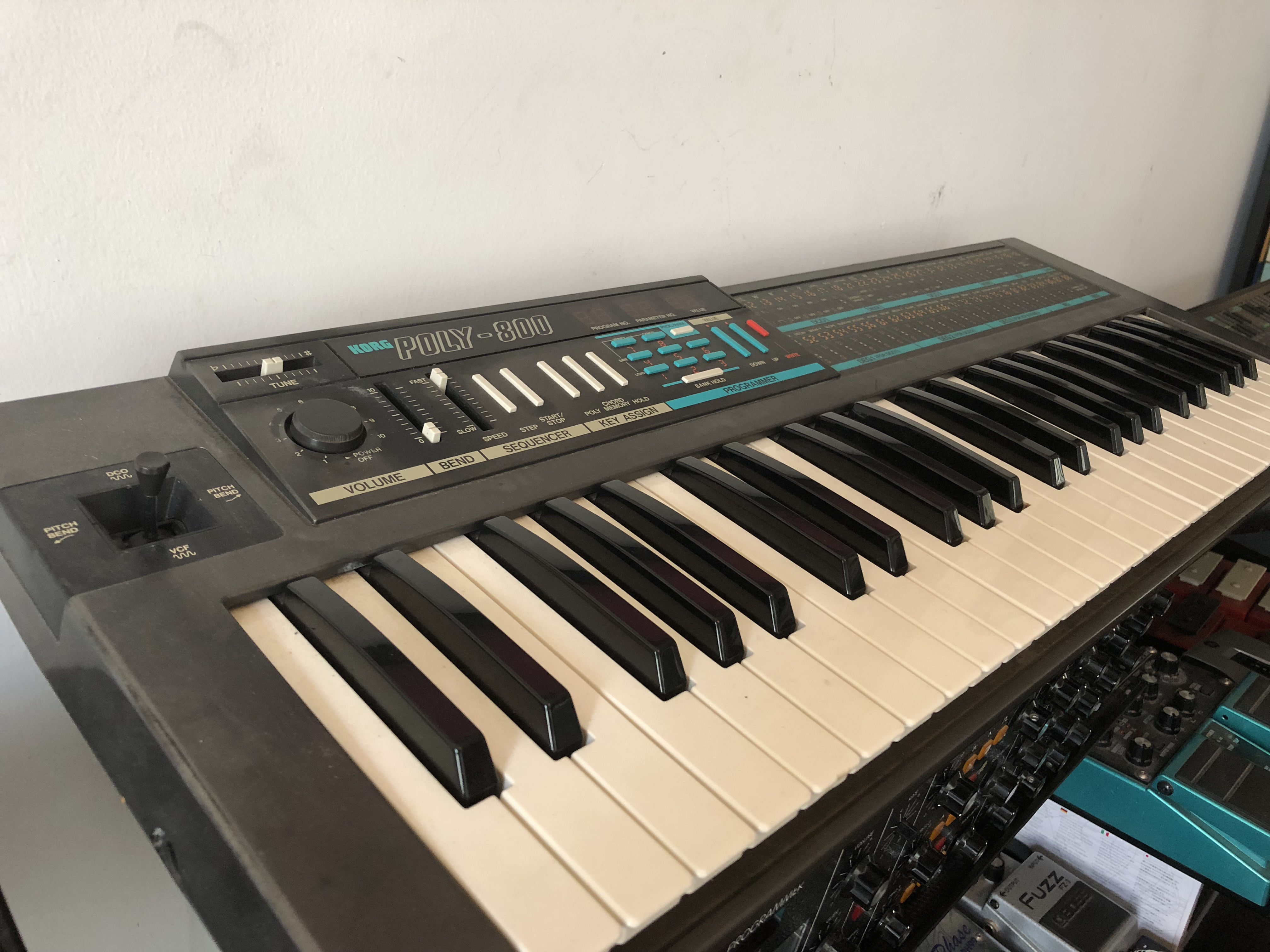
This little guy from the ’80’s is often referred to as the poor man’s Juno. It is, however, not that at all. While it’s not the most fun synth to program because it has no knobs and all tweaking must be done through entering numbers, it does have a rich sound very characteristic of the ’80s—you’ve heard this thing on countless ’80s R&B records, no doubt. It has no effects, which I also love. These days I find myself gravitating towards dry sounds and shaping the effects of a sound during the mixing stage. I find that so many VST synths and new analog synths just come drenched in reverbs and delays, and while that might sound good on its own, it usually doesn’t work out in the mixing stage. I run this thing in mono, add some analog compression and BOOM! Great for pads, brass, and even some great ’80s sounding bass.
3. Pedals
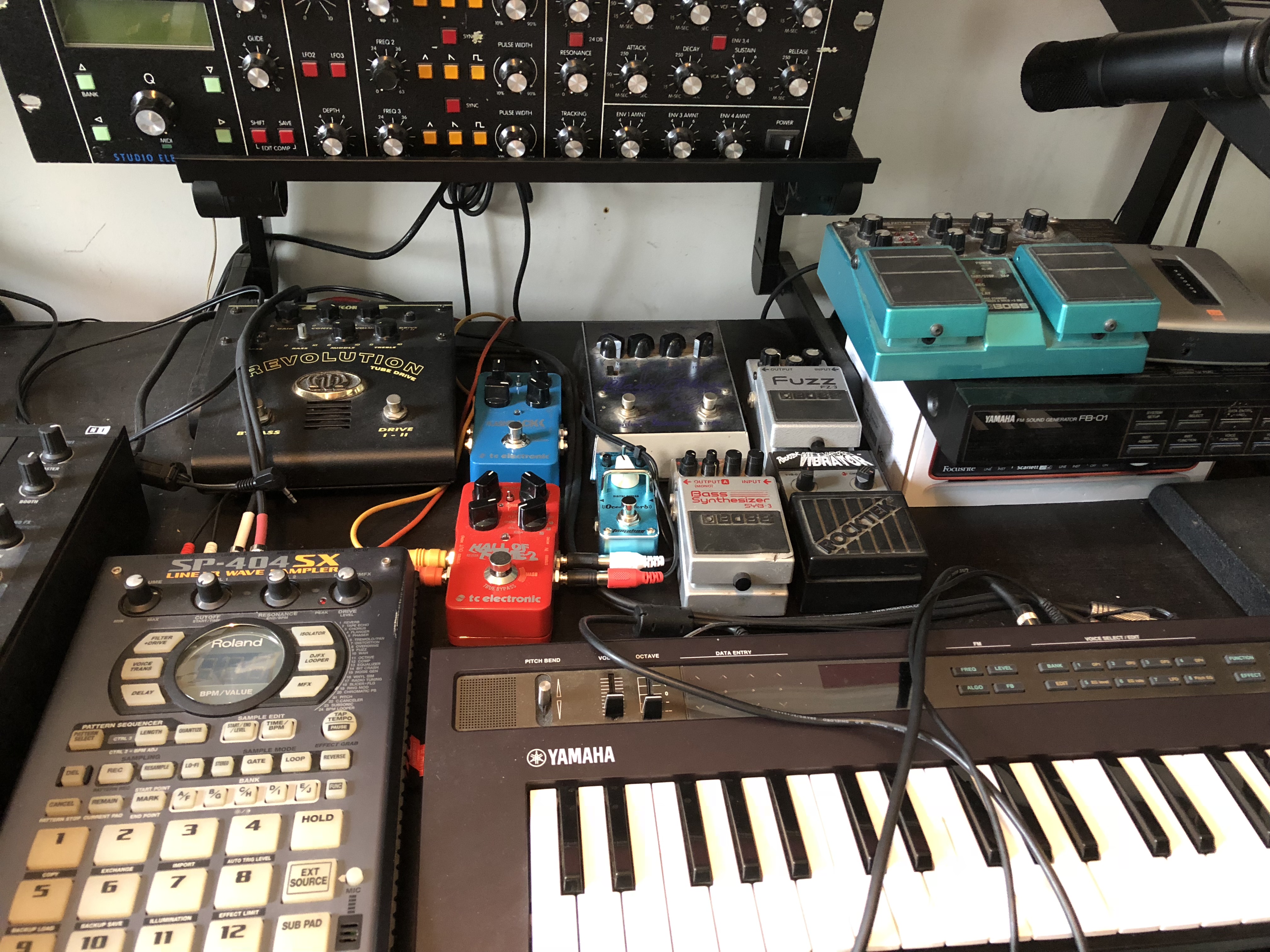
These days guitar pedals have become as popular with music producers as they are with guitar players. The reason is they are so fun—and, at times, cheap! Pick a synth or instrument, create a pedal chain, and start creating completely new sounds. I run cheap 8-bit Casio keyboards from the ’80s through pedals all the time and they sound incredible. I am by no means a huge pedal collector but I do have a few that are my go-to pedals for certain things.
I also like to set up pedals on a send/return scenario and blend in some of their flavors into a mix. This is one way to add some nice analog warmth to a song created in a DAW that sounds too digital or clean. For instance, I use the Roland SP404 on a send for its compressor, which I run in parallel. The same goes for the Revolution Tube Drive pedal, put it on a send/return and tick it lightly for some nice saturation, distortion, and grit. There are so many incredible pedals coming out lately, its hard to keep up. Anytime you have an extra couple hundred bucks to burn on gear, think about the sound you are after, do some research, and grab a pedal.
4. Stam Audio SA4000+ with Carnhill Transformers
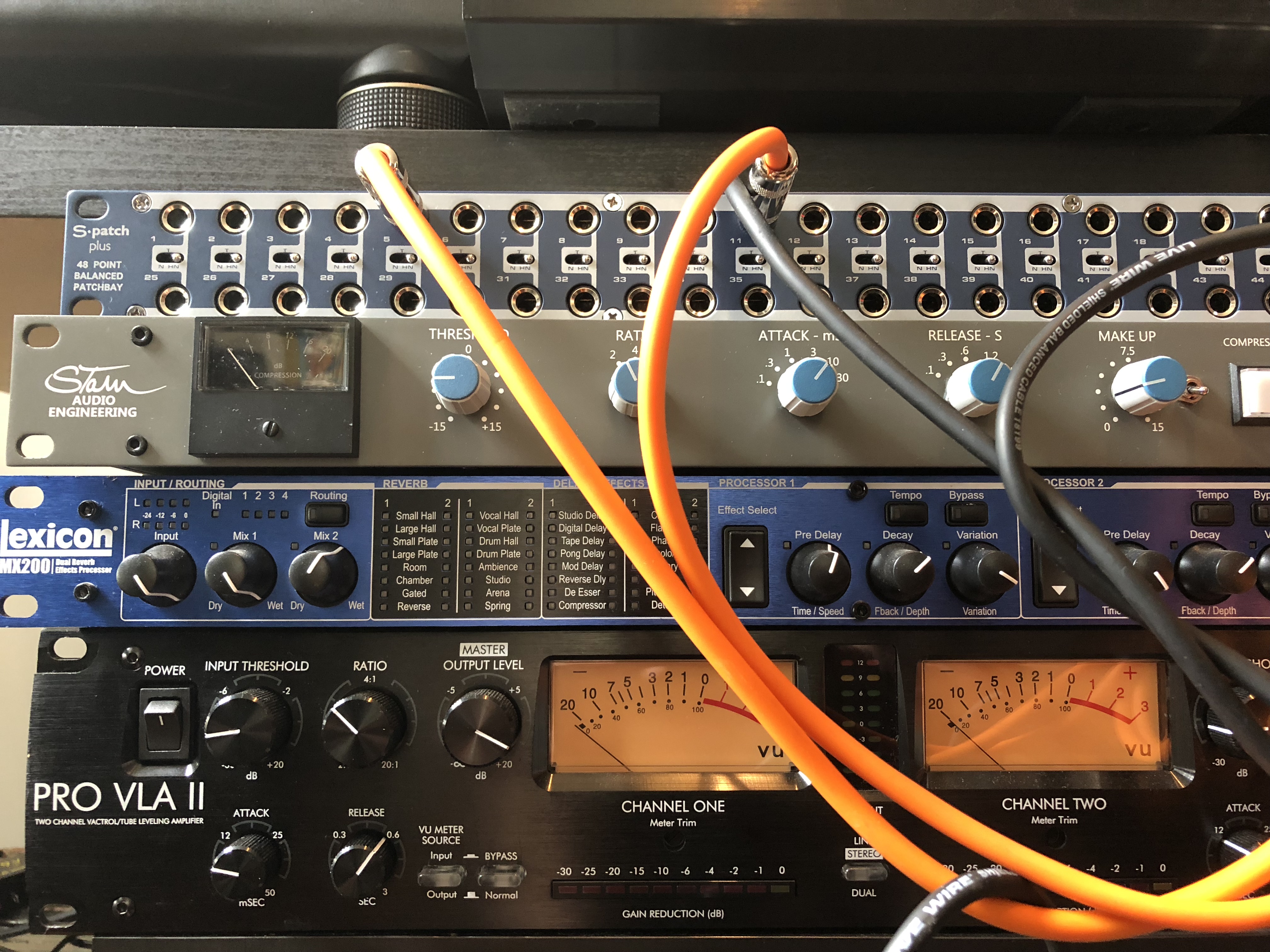
This is new to my studio but it’s getting a lot of use. It’s a clone of the legendary SSL Stereo Bus Compressor. Being that the real one costs nearly $5000, I had always relied heavily on the plugin versions for years. Stam Audio is a company out of Chile that makes these by hand and part-for-part identical to the originals. They are true quality and at a fraction of the price—however, be aware they do have a long waiting list but are well worth it. This thing magically glues a mix together so nicely. The SSL sound is not for everybody but if you know it and like it, it’s an amazing tool. It’s also great to run in parallel on a drum bus.
5. Technics SL-1210 MK2 Turntable and Technics RS T-22 Cassette Deck
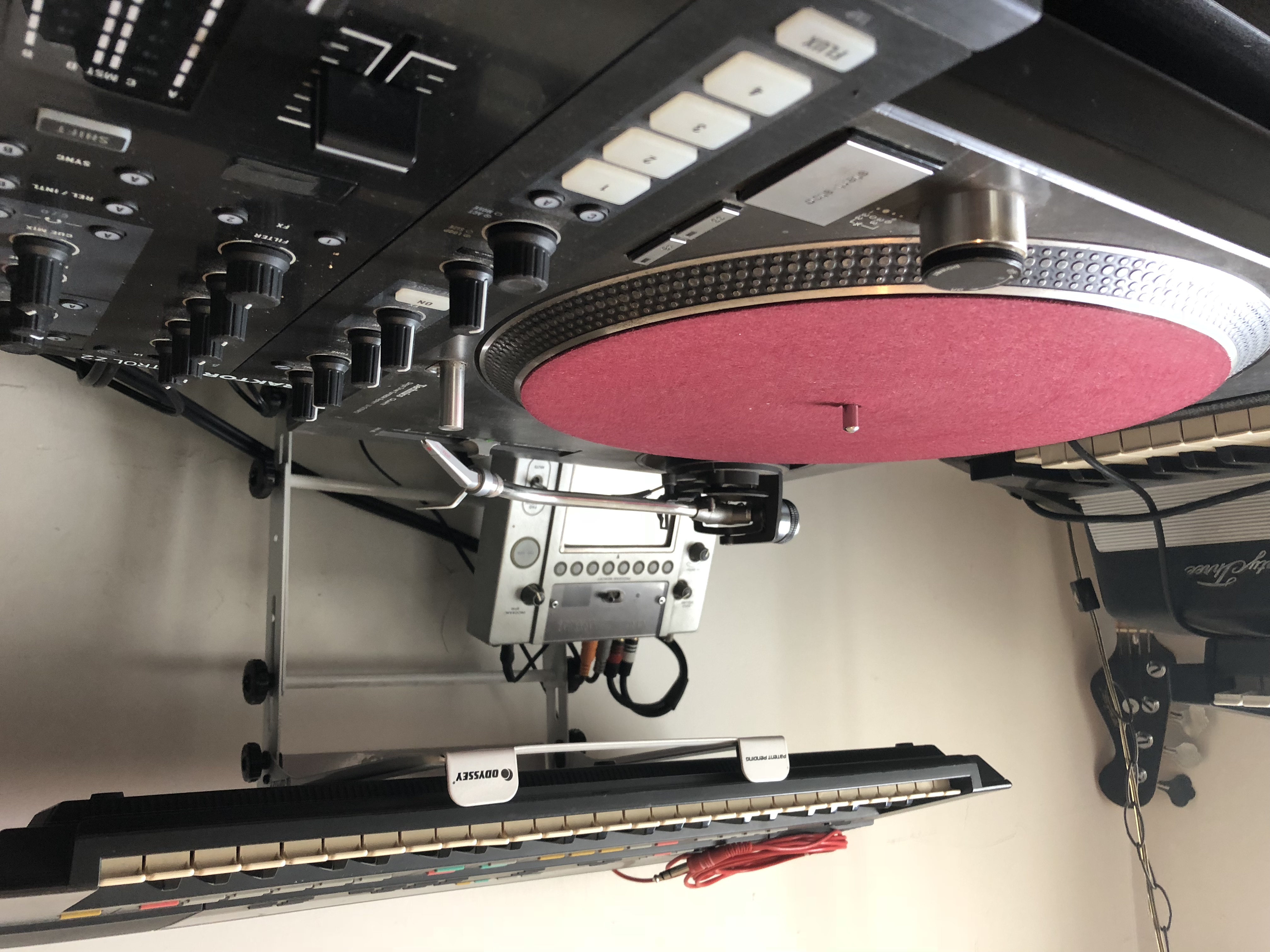
Sampling plays a big role in my production. It’s an art form of its own. Taking small pieces of things and processing them into completely new sounds out of context is like musical collaging. It’s just timeless. I’m a big vinyl collector, so I keep the Technics 1210 in the studio at all times. I can reach for a piece of vinyl, record some sounds directly into Ableton, and quickly start chopping them up and processing them. There is so much to learn from the music of the past. So many records have never been made available digitally and I just love to discover old music constantly, and they provide great lessons on both about production and songwriting.
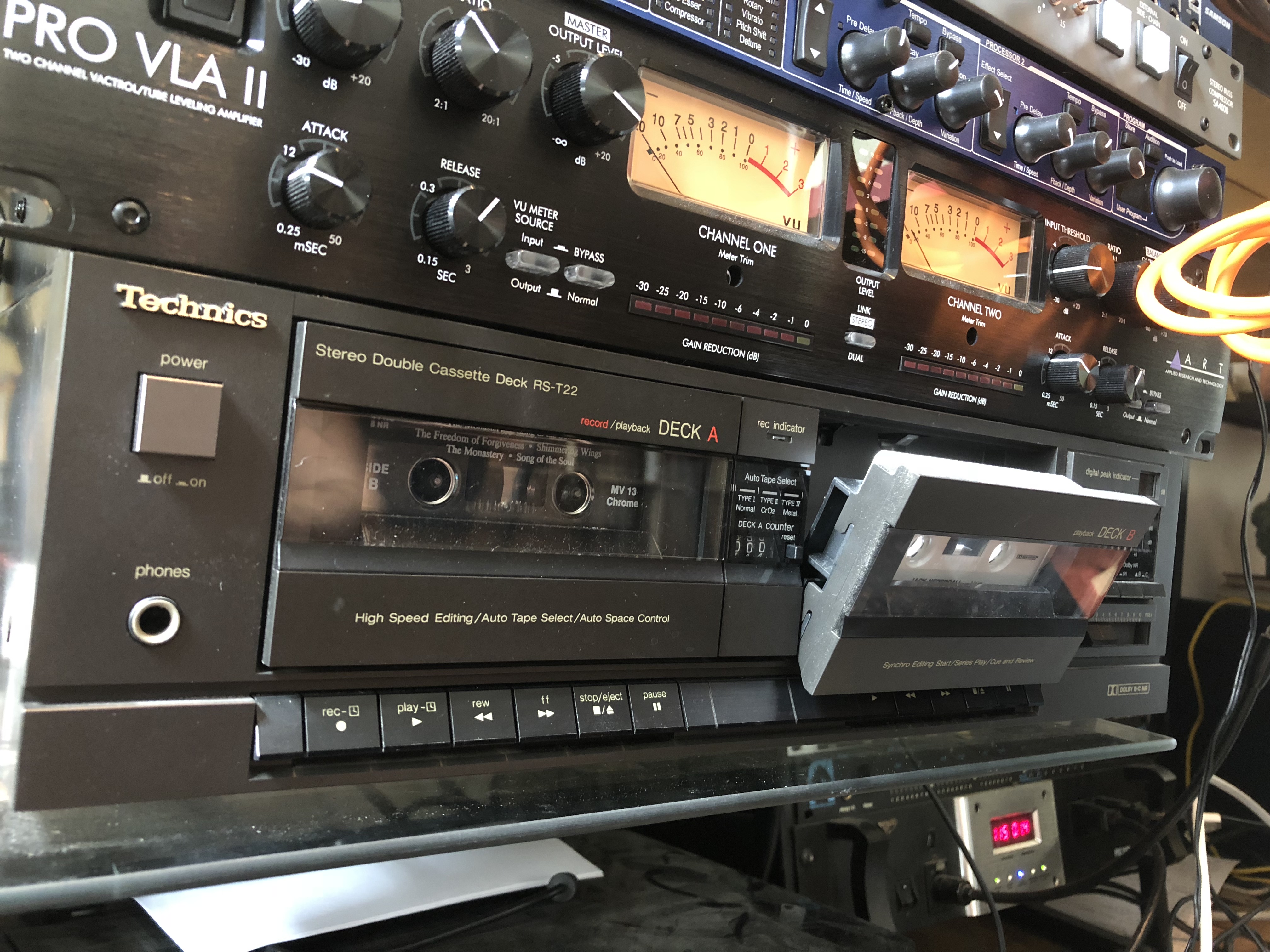
The same goes for the cassette deck. Tape has a certain sound to it and I think most people would agree it’s quite pleasing if used correctly. I love to collect rare and weird private press cassettes made by groups or musicians who just wanted to get their music out there and recorded an album on their four-track recorders. ’80s new age music on cassette is my favorite. I run the cassette deck into the DJ mixer and then into my Korg Kaos Pad and mess with the effects in real time as I’m sampling the cassette. I have the very first Kaos Pad, which I got over 10 years ago and it still works. It has a certain sound to it that I just love on certain things. Lastly, sometimes I will record a section of a mix to tape to give it that warm hiss and saturation and then bring that back into the mix at a low level just to add some warmth and grit.
6. Ableton Push 2
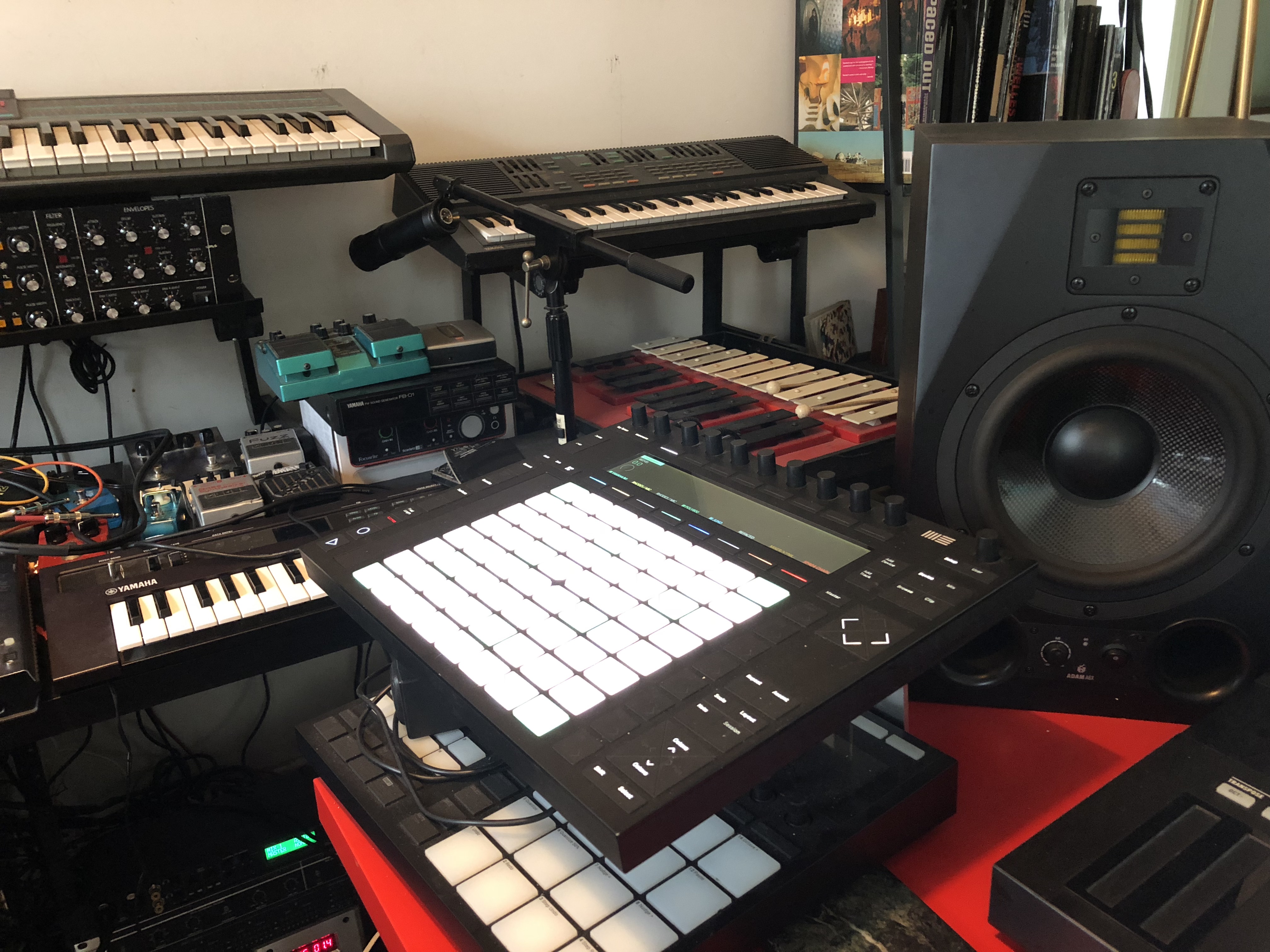
Ableton’s Push 2 has so many fun and useful features—it’s a controller, sequencer, and instrument. We also have these at all the student desks at Point Blank. It’s easy to use and works seamlessly with Ableton.
I love using Push to create huge chords that I normally won’t be able to play on a regular keyboard. It’s also a great tool for jamming out ideas in the studio. Really looking forward to the next development of Push to see where it goes.

